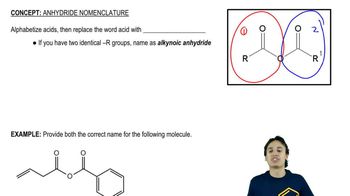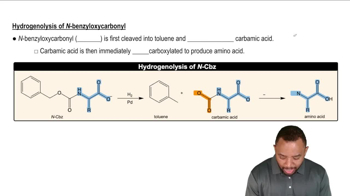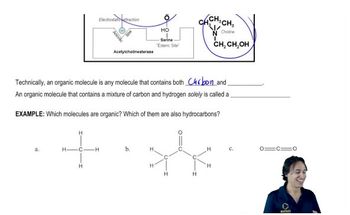Textbook Question
Draw a structure for each of the following:
g. benzoic anhydride
 Verified step by step guidance
Verified step by step guidance Verified video answer for a similar problem:
Verified video answer for a similar problem:



 3:35m
3:35mMaster Anhydride Nomenclature with a bite sized video explanation from Johnny
Start learning